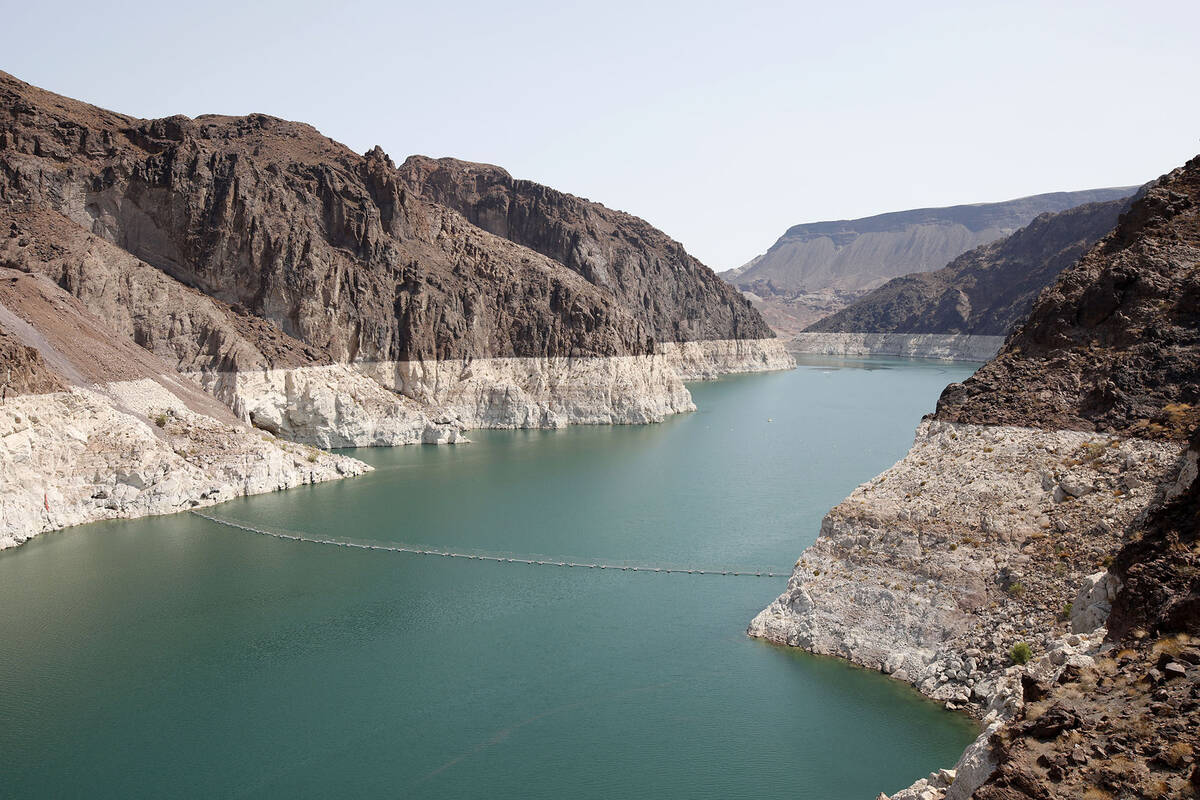Tomorrow marks the January 31 deadline put forth by federal officials to strike a grand bargain between the seven Colorado River Basin (CRB) states. A groundbreaking, watershed deal among the states is unlikely to be announced tomorrow. But the water managers’ PR machines will certainly churn out news to feed the beast and assure everyone that all is well — despite the past 15 years of failure.
When you consider whatever news comes out of the latest negotiations, do not forget what the nation’s top scientists warn: We need millions of acre feet of new cuts to stabilize the system. This is just the beginning of a drier era on the Colorado River.
Below we’ve outlined a basic table accompanied by a grade and synopsis. The smaller the cut, the worse the grade.
“This latest exercise in curtailment will be futile if we’re not cutting at least an additional 3 million acre feet annually,” said John Weisheit, conservation director of Living Rivers. “Water managers have ignored the structural deficit, climate change, and over-use for decades, pushing us to this current precipice. They are failing the public, ecosystems, and future generations.”
“Any effort to tackle the problem with 2-4 million acre feet worth of new cuts is a mere bandage for a gunshot wound,” said Kyle Roerink, executive director of the Great Basin Water Network. “Stabilizing the Colorado River System of today doesn’t fully prepare us for the system of tomorrow. Mother Nature is bringing more cuts whether water managers like it or not. How we prepare now matters for future generations.”
The above table is predicated upon simple math. With climate change, we’ve lost about 3 million acre feet from the 20th Century average in addition to the annual 1.2 million acre feet from the Lower Basin’s structural deficit i.e. over-use, evaporation and system losses. While we cannot predict what each subsequent water year will bring in the coming decades, we can plan to expect that we will see a system with less and less water.
WHAT WE KNOW SO FAR
Right now, the only certainty we have are the cuts outlined in the 2007 Interim Guidelines, the Drought Contingency Plan and the Minute 323 Mexican treaty, which total 1.01 million acre feet of heretofore enacted curtailments. This is a baseline for what we already have on the table, but it will not stabilize the system.
Despite congressional appropriations in the Bipartisan Infrastructure Law and the Inflation Reduction Act that will likely lead to compensated reductions for water users, the public cannot yet account for how those funds have reduced demand. Nor do we have clear data from parties who signed Memorandum of Understanding for proposed agreements such as the 500-plus plan. We can not yet account for promises by states like California to cut an additional 400,000 acre feet or potential System Conservation Pilot Program participants. Nor de we account for the past, present and future Drought Response Operations Agreement (DROA) releases from Flaming Gorge Dam, which are not de facto curtailments in consumptive use.
WHAT WILL MANAGEMENT HAVE TO CONSIDER IN THE FUTURE
The Colorado River System has lost about 20 percent of its average from the last century. That figure will likely double by the end of the 21st Century.
Research released last summer suggested that Lower Basin water users had to reduce use –– in addition to current cuts –– by at least 2 million acre feet annually to stabilize the system in the coming years. In the study, the efficacy of those reductions depended on the rate of future Upper Basin development. The Upper Colorado River Commission estimates that, exclusive of evaporation, Upper Basin states could plan to consume an additional 1.7 million acre feet annually by 2060.
By some estimates, however, all Upper Basin states except Wyoming are already over-using their allocation under the Colorado River Compact’s Upper Basin Amendments — which divvy the share via a percentage of water rather than fixed allocations as in the Lower Basin.
All of these factors lead us to believe that if both basins aren’t significantly cutting, the nation can expect to be whipsawed by the Colorado River System for decades to come. We advocate for a new management regime at Glen Canyon Dam, a moratorium on new Upper Basin dams/diversions, robust curtailment in the Upper and Lower Basin, and better accounting for evaporation, system losses, and gauge readings throughout the Colorado River Basin.

